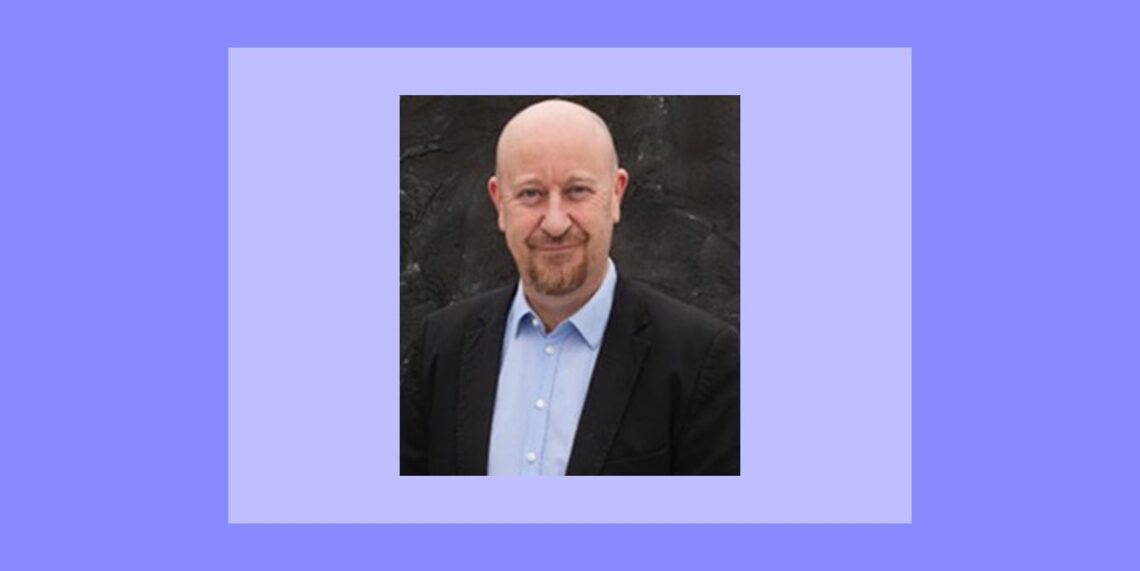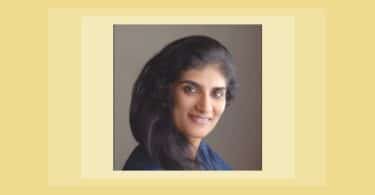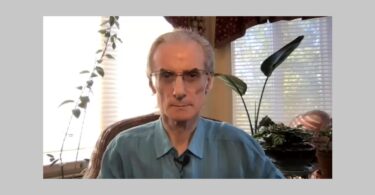Brisbane August 2009
J: So Alastair, you’ve just become a program leader for Endeavour College of Natural Health homoeopathic department, where do you see the future of homoeopathic education going?
A: That’s the big question Jen. Let me think about that. Of course, I am a homoeopath so the answer is, it depends! From my travels around the world I would say the state of homoeopathic education in Australia is fairly robust. Of course that robustness is wafer thin if for example we lost our accreditation, or if there was some sort of political change that we weren’t in a position to be able to adapt to. So while I’m an overwhelmingly optimistic person, that optimism when it comes homoeopathic education is often tempered with a nervousness and a sense of vulnerability at what’s going on around us. But that aside what seems obvious to me is that I’ve inherited at Endeavour a fairly healthy ship. So far in my few weeks on the job I haven’t detected too many leaks. What we have here is a curriculum that is balanced fairly well and is a middle path curriculum that emphasizes all aspects and methods of homoeopathic medicine which, to my way of thinking is a fairly healthy posture. Boenninghausen is taught, and Vannier is taught. Isopathy is mentioned and emphasis is placed on the value of Kent. So you know what I mean by a middle kind of path. In addition, towards the end of this program, the modern, so-called advanced techniques of Scholten and Sankaran are emphasized and to my way of thinking, it’s good to have an introduction to that work, but not overemphasize it too much. So from that perspective you understand what I mean by the ship’s pretty healthy, numbers are okay in the campuses in Melbourne and Brisbane, and we have a really robust, healthy and experienced level of staffing.
Casting an eye towards the future, it seems that from an educational point of view the only thing worth talking about is the degree to which delivering homoeopathic medicine goes online, becomes digitalised, and becomes more user-friendly for those folks in the 21st century. To me the biggest debate that we have to have as a profession, is the degree to which homoeopathic philosophy, materia medica, bio-sciences are delivered online and what degree of human contact is ever be required. What’s obvious to me is that my masters in this institution clearly want to save money here and there. It’s a global economic crisis. And while natural medicine seems to be weathering the storm okay, there are still times of hardship. Of course, everyone needs to save money, however there is a false promise and a wrong assumption if it is assumed that money can be saved by putting curriculum online without human contact. What ends up happening is that you rob Peter to pay Paul because students will go to online delivery where its flexible and able to be downloaded onto your iphone. But without human contact you never sustain their interest.
Distance learning or virtual learning can be isolating and lonely and we know this from years of correspondence courses. Distance learning, flexible learning courses and the needs of the distance students in the 21st-century generation Y student clearly involve human contact, and I’m not sure the degree to which my bosses upstairs are aware of this. I see part of my job now to ensure that that happens. I think everyone is in agreement that clinical training remains the domain of face-to-face contact. There seems to be very little enthusiasm for any sort of clinical training being delivered via You Tube or a virtual classroom.
So personally I’m of the opinion that quality online delivery is possible in our field, and I see that a significant part of my work is gently nudging homoeopathic medicine into the 21st-century, maintaining quality and not losing any of the integrity and quality that our teachers and their teachers and their teachers have willed to us. Does that make any sense?
J: Yes. You have highlighted the clinical training model that will need to be addressed in the future. The bachelor program at Endeavour runs clinical training on campus for 16 weeks during each semester. Alternatively, the advanced diploma model that you use elsewhere, has been traditionally delivered in an intensive style or with intensive one-on-one supervision with a personalised clinical supervisor. Do you intend to blend or adopt a particular training model?
A: This is the first job that I’ve ever had. Don’t get nervous. I’ve done nothing else but practice homoeopathy or teach homoeopathy for 20 years. I’ve had lots of experience teaching in different colleges that have needed to adapt their clinical training to the circumstances they see around them. This is in Ireland, England, Malaysia, Colorado, New Zealand, Australia etc. With that kind of breath I feel like I have a handle on some of the issues that are at play when it comes to delivering clinical training.
But first, what is clinical training and what is it for? I have a suspicion that over the years and with previous generations of homoeopath’s, there has been a complete overemphasis on an unhealthy cult of personality. I understand where it comes from, because nothing is more seductive than sitting at the feet of an expert and watching him in action. There’s something truly amazing to behold when you watch the master working. So my suspicion is that our great historical teachers have often had that kind of complete inspirational training. And to some extent it seems that this is fine and works for some people. Actually if I’m honest, it worked for me too, because one of the reasons that I’m a homoeopath is that I watched two great lecturers who were utterly inspirational in my training in the UK. Inspiration counts for a lot, especially in the winter when it is cold and your patient’s don’t like you and is nothing is working. But one of the things about these strong personalities and experts is the over emphasis on the ‘right’ remedy.
But what I just said goes against every piece of literature we have about adult education in the 21st-century. Everything that I’ve read and with the Masters I have completed and the work that I had to do recently for that qualification, what I heard and learned was that the expert model works for some, but not for all. In fact, can we ever have a model of clinical training that works for everybody? Probably not, but one of the things that is of personal importance to me is a sense of frustration that more students are not confident practitioners and running meaningful practices. I hate that. I hate the fact that there has been a poor conversion of enthusiastic homoeopath’s across-the-board… across all countries.
To my way of thinking, clinical training is without exception the most important part of our homoeopathic students’ development. It’s in the clinic where everything comes together. So I’ve been influenced recently to move away from demonstrating expert skills in the clinic to students. That’s a joke by the way. Because in fact very few students learn from that. From my experience, an expert homoeopath demonstrating how brilliant she is leaves you inspired for a while, but then the opposite secondary action happens where you think, “How the hell can I replicate that?”.
When I visited Belgium recently, I spoke about the use of clinical training and technology. What we all seem to agree on is that the model with which we want to take homoeopathy into the 21st-century is like learning how to drive a car. The first step is you look at the car. Someone says to you ‘this is a car’ and you get to sit in it and touch all the bells and whistles. Then you go in the passenger seat while someone drives the car and you watch for a while, but then the time comes to eventually take control of the wheel. But all the while someone is sitting there with you the whole way through, whispering in your ear, telling you that you are doing a good job, reminding you what the brake is for. That’s the clinical training model which to my way of thinking seems most practical and more likely to touch the most number of students. It is a disease in homoeopathy that we have anxious fourth year students, which is terrible, when they should be busting out their skin and running confidently into practice.
So to your question… It seems to me that we’ve got to keep our objective in mind of developing confidence, as students go through this process of clinical training. The continuity of supervisor is important, but I’ve seen great homoeopaths come out of clinical training models like the one at Endeavour that exists at the moment, but also great young practitioners have come from clinical training models where they have done a few cases that have been intensely supervised and through repetition of a chronic case evaluation. If you add to that the fact that our students are getting younger, have different needs, demand flexibility and the appropriate use of technology, then it seems that what we have to do as colleges is be more flexible and provide options. We also have to insure they attend to the issue of the patient’s wellbeing.
So what I would like to see is a blended delivery system that’s flexible and full of quality. It reminds me of one other thing which I am often reminding my lecturers about. Students don’t come to any college because of the curriculum. What sustains them actually, what they come for, is the passion and intensity and inspiration that they receive from their amazing lecturers. All of that tells me that no model will ever be perfect, but it’s important that we keep chipping away at it and remember that what we are doing is providing inspirational yet grounded training for our lovely students.
J: I agree with you. I have noticed that confidence has definitely become a big issue with graduating students. As teachers, mentors and colleagues how do you think we can contribute to the confidence of our future colleagues?
A: Had you asked me that question five years ago, I would have said ‘It’s really simple, just come along to my postgraduate course.’ The best homoeopathic education I got until recently was Jeremy Sherr’s postgraduate course in England. It was through that, that I had my gaps filled when it came to some clinical skills but mostly clinical confidence. It was an amazing experience. When I started teaching in 1998 I was observing exactly what you’ve observed. Frustrating dropouts of really really good students. I sat down in 2002 with Susanna Shelton and we put together a postgraduate program essentially to fill this gap. Since then I’ve run it in New Zealand and Australia and online and over the years it has been of immense personal and professional satisfaction to work with students at postgraduate level developing confidence essentially. And we’ve had amazing sessions where we talk about marketing and we talk about educating the public, where we deconstruct our practices and looked at what qualities busy practitioners have and model them. My intention now is that there will be no need for a postgraduate course like that, our undergraduate degree will be so good that we won’t have a need for a course like that. That is not to say we won’t have any postgraduate training, but that’s where for example, the amazing work of Peter Tumminello in Australia or Rajan in India or Louis Klein in America is truly postgraduate.
Wth this position that I’ve taken at Endeavour, I would love to be a part of pushing the profession gently along the road. But it’s a road that requires a delicate navigation. We are living in an evidence based world, and homoeopathy’s place is not in the back shed or a small college run from someone’s living room. Homoeopathy started loudly in the context of orthodox medicine. And I think that its place quite naturally should be in that kind of context. Recently I was in Malaysia and talking with university officials who are establishing degrees in all sorts complementary medicine, but slightly differently from what we’re doing here at Endeavour. What they’re doing is making sure that all of their students have common units of medical sciences. The students end up with a medical degree specialising in homoeopathy which is slightly different from what we are doing. Nevertheless our future is with research and acknowledging that we must identify the evidence-base we have.
This is not to play an artificial game by finding something that is not there, but actually to acknowledge the incredible amount of evidence as to the efficacy that we already have and get our students familiar with it. Students and practitioners are reluctant to engage in research because they perceive that it’s too hard. It’s not. It’s about doing manageable pieces of qualitative research that we all have the skills for, and through that, making inroads into the scientific community. Here at Endeavour in our degree, we have a significant proportion of our curriculum devoted to evidence and research and developing those skills which actually are required to take our place beside our orthodox friends and other complementary healing modalities. Going back to your point about postgraduate training, it seems that’s the natural place to do further training about specific health issues, irritable bowel syndrome, men’s health, diabetes, depression. For the last 10 years what I’ve done is teach for whoever asked. But for the first time I’ve decided to pitch my tent with a college that has the closest educational ethos and vision to my way of thinking.
J: Thanks Alastair so much.
————————————-
Alastair Gray – MSc (UK) BAHons (NZ) ADH (NZ) DSH (UK) PCH (UK) PCHom (Malaysia) AHA. ATMS. ARoH (Aus) RSHom (UK)
Alastair Gray trained in the UK at the School of Homeopathy and completed his postgraduate work at the Dynamic School in London. He has a degree in history and his interests include medical and homeopathic history, Gestalt therapy and archery. Alastair has delivered hundreds of lectures worldwide. He has conducted a number of provings and published four books and numerous articles on the provings of White Tailed Spider, Box Jelly Fish, Moreton Bay Fig, Tea Tree, Waratah, Liquorice, Cockroach, Toad, Seahorse, Cactus, Kowhai, Pearl Mosquito, Irukandji and Tar Tree.
# # #




